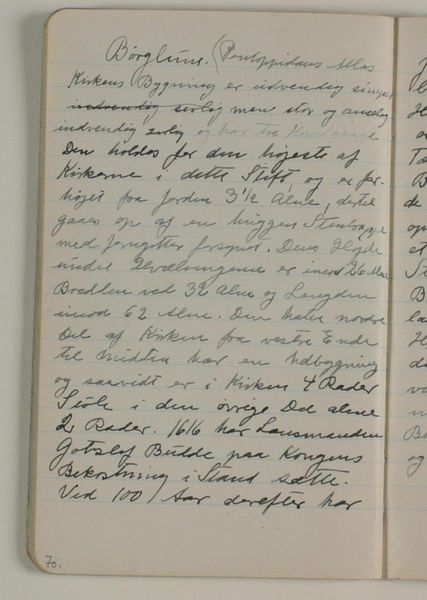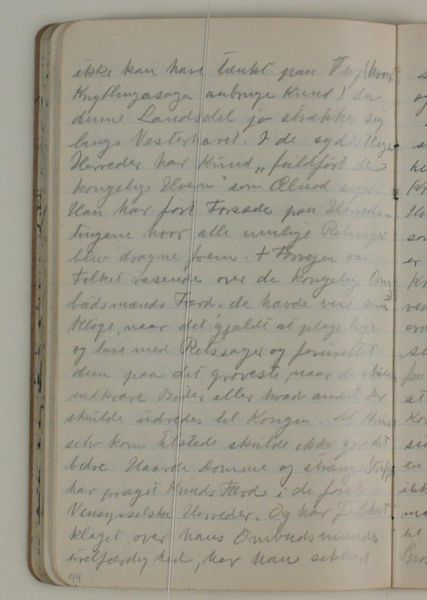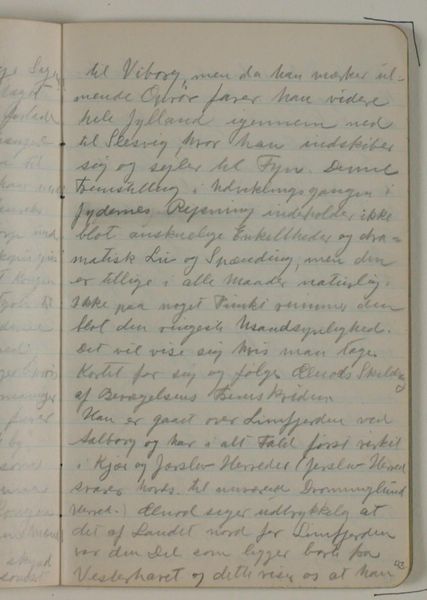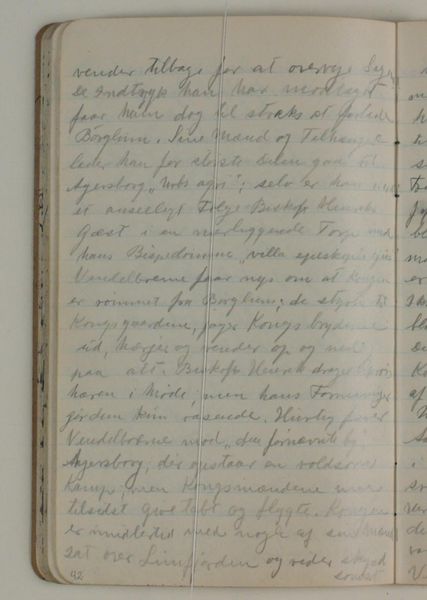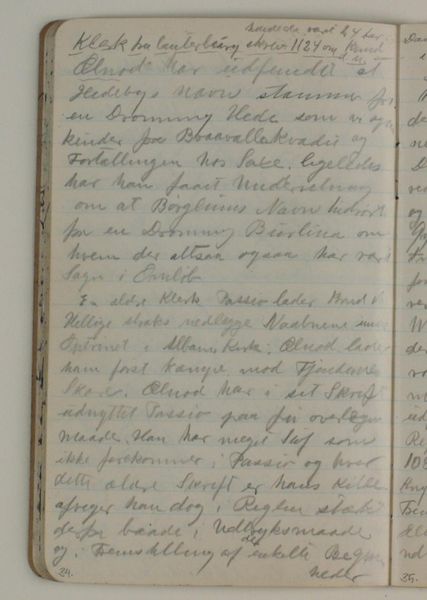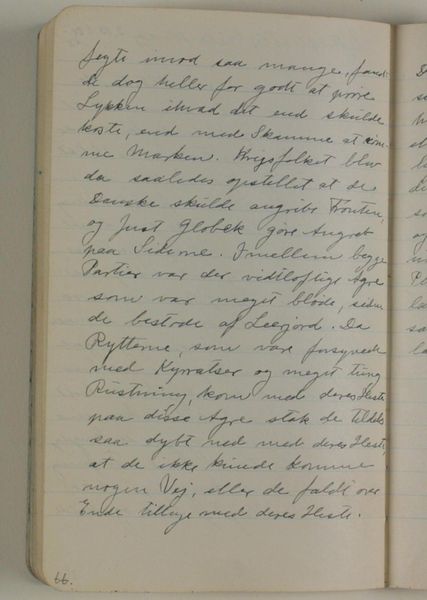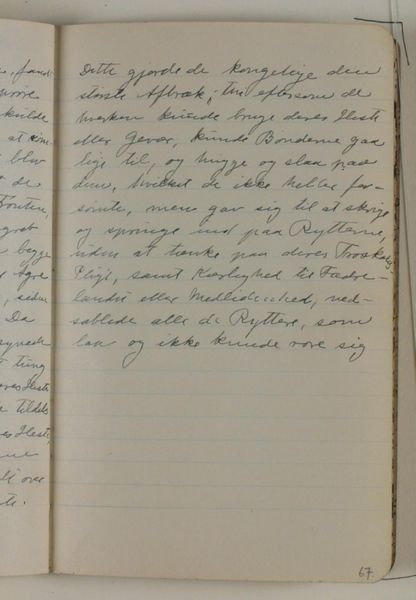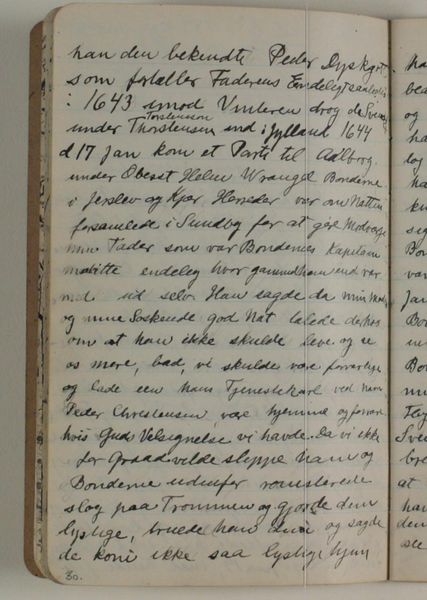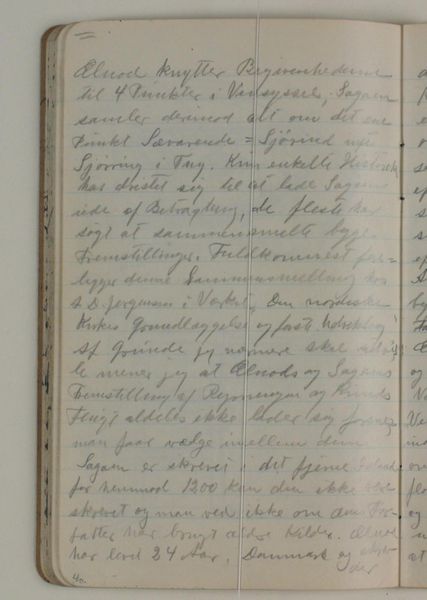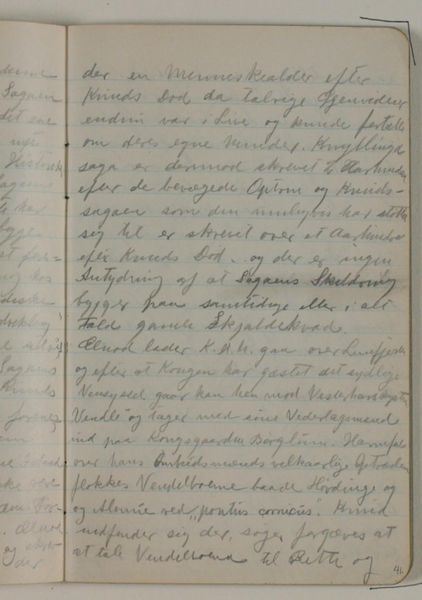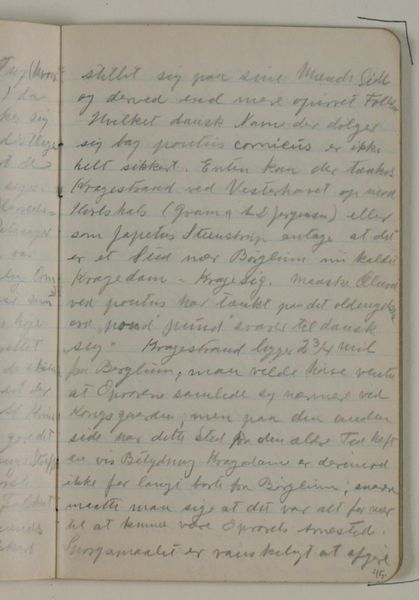
Notater vedrørende Ælnods saga om Knud den Helliges færd i Vendsyssel. Uddrag fra Historisk Tidsskrift, Hans Olrik 1933 - 1934
0:00
0:00
drawing, paper, ink
#
drawing
#
paper
#
ink
#
coloured pencil
Dimensions: 175 mm (height) x 109 mm (width) (monteringsmaal), 175 mm (height) x 109 mm (width) (bladmaal)
Curator: This is Niels Larsen Stevns’ “Notater vedrørende Ælnods saga om Knud den Helliges færd i Vendsyssel. Uddrag fra Historisk Tidsskrift, Hans Olrik.” It's an ink drawing on paper, created sometime between 1933 and 1934. Editor: My initial impression is of… well, of historical fatigue, I suppose. The cramped, faded handwriting, the sheer density of text on the page... it evokes the weight of archives, the meticulous labour of scholarship. Curator: That's an interesting observation. Stevns was indeed immersed in historical research. This drawing is part of a larger project where he sought to visually interpret and connect with historical narratives, specifically those relating to the Danish King, Saint Canute, and his travels. He was drawing from Hans Olrik's work in "Historisk Tidsskrift," so his creative process relies upon Olrik's. Editor: So, he’s not just illustrating, he’s engaging with the historian’s interpretation of events. Does that imply a kind of authorial intent, a reading of history through a particular lens? What can we infer about Stevns's own views on Saint Canute, or on the power dynamics of the era? Curator: I believe so. As a visual artist engaging with academic historical material, his sketches became arguments themselves. He may have selected Olrik, a critical historian, over more celebratory accounts of Saint Canute to draw, therefore adding nuance through this specific illustration. Editor: So this drawing, on one level, becomes part of an argument for reconsidering the story and its wider cultural understanding. Are there further connections? I mean, looking closer, these notations, dated from the 1930s… does this work respond in any way to rising nationalisms in Europe at that time, when ideas of cultural purity were getting misused to underpin racist politics? Curator: That's an insightful link to make. While it isn't explicit, the act of returning to national historical figures at such a time suggests an interest in critically assessing foundations of national identity. I am particularly drawn to his dedication in visualizing these obscure histories that call attention to smaller and perhaps less glorified, historical circumstances. Editor: So, it's about unpacking layers of meaning rather than cementing a singular historical "truth." Curator: Exactly. It becomes an opportunity to discuss, challenge, and remember the importance of visualising the archives. Editor: That definitely gives me a lot to think about.
Comments
No comments
Be the first to comment and join the conversation on the ultimate creative platform.
